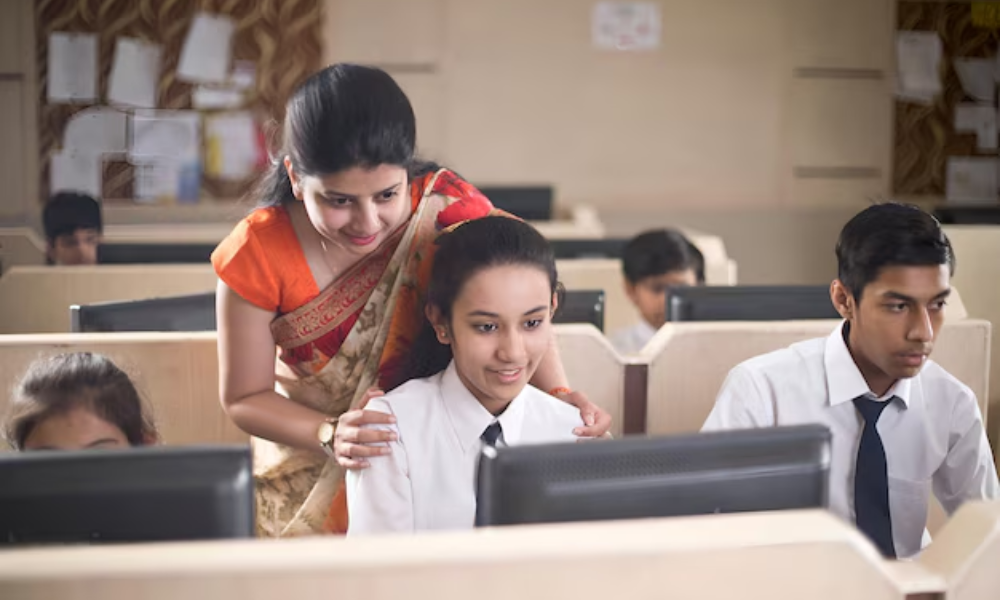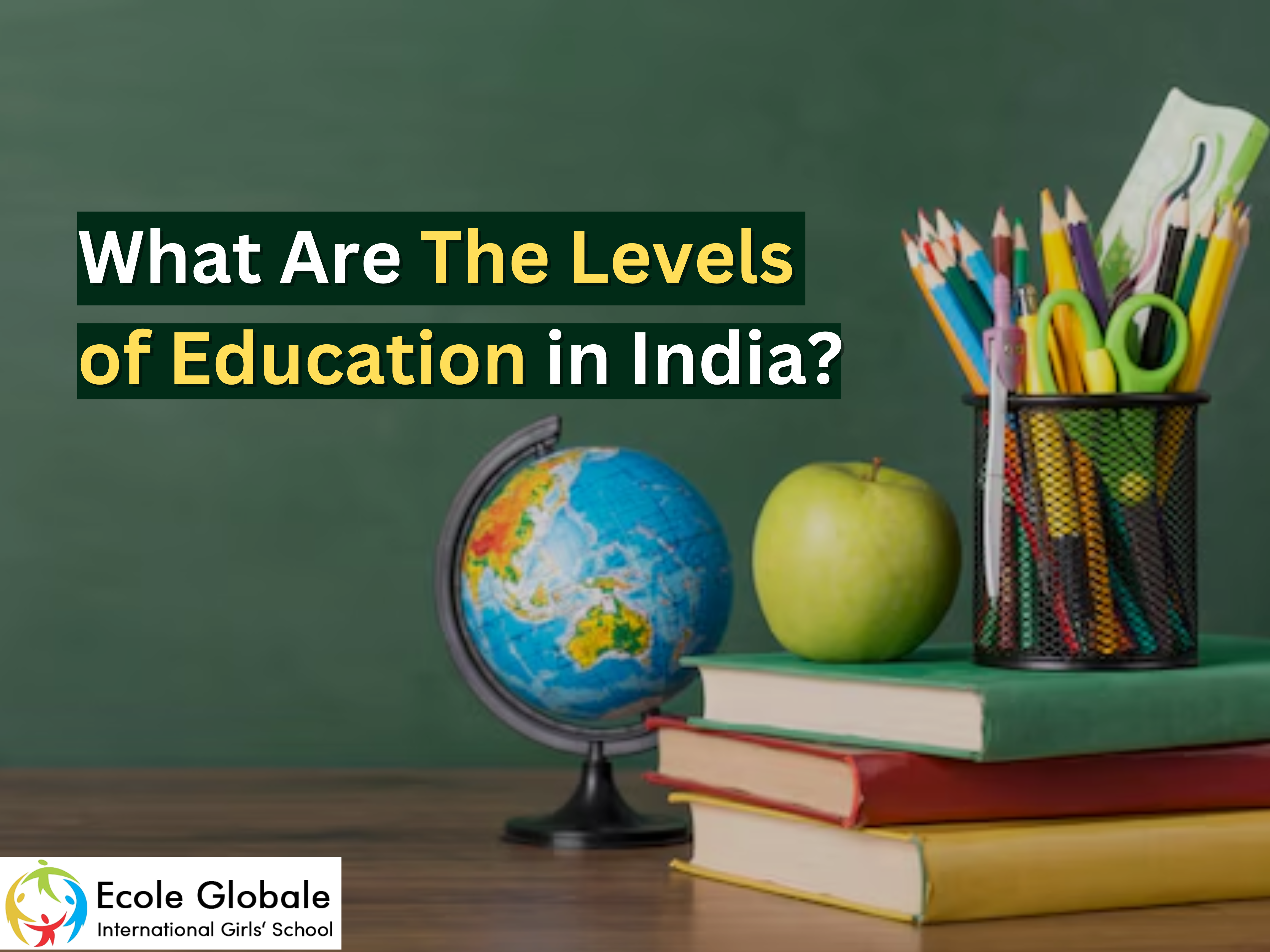The education system in India is divided into different stages, each playing an important role in shaping a child’s growth and development.
We will understand the various levels of education in India, their significance, and how they contribute to a student’s journey from early learning to higher education.
This guide is useful for parents, college-going students, and teenagers who want to know more about the Indian education system.
Main Levels of Education in India

The education system in India has five main stages:
- Pre-primary (Early Childhood Education): Nursery to Kindergarten
- Primary (Elementary Education): Classes 1-5
- Upper Primary (Middle School): Classes 6-8
- Secondary (High School): Classes 9-10
- Higher Secondary (Senior Secondary): Classes 11-12
Let’s go through each of these stages to understand them better.
Pre-primary Education (Early Childhood Education)

Pre-primary education is for children aged 3 to 6 years and is the starting point of their learning journey. This stage helps develop important skills like social interaction, language, and basic numeracy. It includes nursery, lower kindergarten (LKG), and upper kindergarten (UKG).
Key Features:
-
Focuses on developing motor and cognitive skills.
-
Prepares children for formal schooling.
-
Encourages creativity and independence through play-based learning.
Primary Education (Elementary Education)

Primary education includes classes 1-5, where children start formal education. This stage builds a strong academic foundation in subjects like Math, Science, and Languages (English and regional languages).
Key Points:
-
Focuses on reading, writing, and arithmetic.
-
Introduces basic science and environmental studies.
-
Uses activity-based learning to make education interesting and engaging for students.
Co-Curricular Activities in Primary Education
At the primary level, schools in India also emphasize co-curricular activities such as sports, arts, and crafts. These activities help children develop important life skills like teamwork, discipline, and creativity.
Upper Primary Education (Middle School)

Upper primary education includes classes 6-8. This stage acts as a bridge between primary and secondary education. The curriculum expands to cover more advanced topics in Math, Science, Social Studies, and Languages.
Key Subjects:
-
Mathematics: Includes arithmetic, algebra, and geometry.
-
Science: Introduces subjects like physics, chemistry, and biology.
-
Social Studies: Covers Indian history, geography, and civics.
-
Languages: Focuses on improving skills in English and regional languages.
Exams and Assessments in Upper Primary
At this level, students start taking more frequent assessments and exams to track their learning progress. These evaluations help develop critical thinking and problem-solving skills.
Secondary Education (High School)

Secondary education, covering classes 9-10, is a critical stage where students need to start thinking about their future careers. During these years, they prepare for board exams like CBSE, ICSE, or state board exams, which play an important role in their academic journey.
Key Focus Areas:
-
Emphasis on core subjects like Math, Science (Physics, Chemistry, Biology), and Social Sciences.
-
Introduction to career-oriented subjects like computer science and economics.
-
Increased focus on board exam preparation.
Importance of Career Counseling in High School
During high school, students should receive career counseling to help them decide on their future. This counseling guides them in selecting subjects that match their skills and interests, helping them choose between higher education or vocational training.
Higher Secondary Education (Senior Secondary)

Higher secondary education, also known as classes 11-12, is where students specialize in a particular stream based on their career goals. There are three main streams:
- Science: Includes subjects like Physics, Chemistry, Biology, Mathematics, and Computer Science.
- Commerce: Focuses on Economics, Accountancy, and Business Studies.
- Arts/Humanities: Includes History, Political Science, Sociology, and Psychology.
Entrance Exams After Higher Secondary Education
After completing class 12, many students prepare for entrance exams to get into college. Popular entrance exams include JEE, NEET, and CLAT, depending on the chosen stream.
Challenges in the Indian Education System

While the Indian education system offers many opportunities, it also faces certain challenges that need to be addressed for the overall development of students.
-
Lack of Uniformity Across Boards
In India, different boards (CBSE, ICSE, and state boards) have different syllabuses and assessment methods, leading to variations in learning experiences. This can cause confusion and pressure for students who switch boards.
-
Infrastructure and Accessibility Issues
Many schools, especially in rural areas, face infrastructure problems such as a lack of proper classrooms, labs, and teaching resources. This can create a learning gap between urban and rural students.
Key Issues:
-
- Lack of qualified teachers in remote areas.
- Inadequate school facilities.
-
Role of Technology in Education
One solution to these challenges is the use of technology in education. Online platforms, digital classrooms, and e-learning can make education more accessible to students, especially those in remote areas.
Benefits of Technology:
-
- Makes learning more affordable and accessible.
- Helps bridge the urban-rural education gap by bringing quality education to all.
Conclusion
The levels of education in India provide a structured pathway for students, helping them grow academically and personally.
Each stage is crucial for a student’s development, from pre-primary education to senior secondary school.
However, challenges such as infrastructure issues and differences in syllabus across boards need to be addressed to ensure every child receives quality education.









